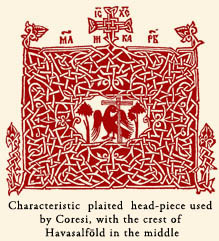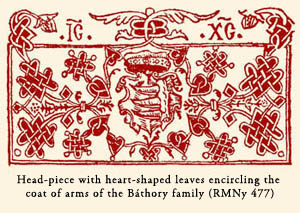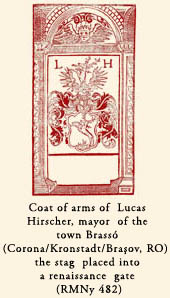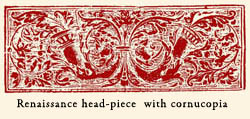Although the first press printing with cyrillic types was set up in Szeben (Cibinium, Hermannstadt, Sibiu, R), the one founded in the other significant Trnsylvanian Saxon town Brassó (Corona, Kronstadt, Brasov, R) proved to be much more active and long-lived. It was lead by diacon Coresi but he had several printers helping his work, like his son Şerban, his companion Oprea as well as the printers Tudor and Mãnãila.
It was lead by diacon Coresi but he had several printers helping his work, like his son Şerban, his companion Oprea as well as the printers Tudor and Mãnãila.
Coresi was the diacon of the metropol of Târgovişte in Wallachia where he was also active as a printer before settling in Transylvania. In the Transylvanian Principality his office was mostly working in Brassó, but for some years he moved with his equipment to Szászsebes.(Oraştie).
The first product of his press was Osmoglasnik in 1557, the publishing of which was supported by Jonann Benkner city mayor of Brassó, and was probably transported and sold by Brassó tradesmen to the neighbouring Romanian Pricipalities.
 While in Szászsebes he printed a Sbornik (1580), following the example of an edition printed in Venice in 1538. Its wood-cut decorations were also made after the Venice sample. This edition of Coresi was initiated by the Transylvanian Orthodox metropolite Ghenadie. Coresi had several book-ornaments in which not only the Moldavian crest, but the coat of arms of the Transylvanian Prince Báthory was included.
While in Szászsebes he printed a Sbornik (1580), following the example of an edition printed in Venice in 1538. Its wood-cut decorations were also made after the Venice sample. This edition of Coresi was initiated by the Transylvanian Orthodox metropolite Ghenadie. Coresi had several book-ornaments in which not only the Moldavian crest, but the coat of arms of the Transylvanian Prince Báthory was included.
 One of Coresi's finest books is the orthodox Evangelie. From its preface it appears that its publication was ordered by the then city mayor of Brassó, by Lucas Hirscher., the family crest of whom with the stag can be seen at the beginning of the volume, placed into a characteristic renaissance gateway.
One of Coresi's finest books is the orthodox Evangelie. From its preface it appears that its publication was ordered by the then city mayor of Brassó, by Lucas Hirscher., the family crest of whom with the stag can be seen at the beginning of the volume, placed into a characteristic renaissance gateway.
The book ornaments and figural wood-cuts of the Coresi prints are related partly to the decorative elements of the Old Church Slavonic liturgical books made in Târgovişte and partly to the Venice tradition. These cultural influcenes are explained by the circumstance that Oprea, the first printer companion of Coresi, was earlier working in Târgovişte at the office of Dimitrie Logofátul, grandson of the Venice printer Božidar Vuković.
 Coresi was followed by his son Şerban, it was in his printing shop where in 1588 the last book printed in Transylvania with cyrillic scrpit in the XVIth century was issued.
Coresi was followed by his son Şerban, it was in his printing shop where in 1588 the last book printed in Transylvania with cyrillic scrpit in the XVIth century was issued.

DECORATED INITIALS
<<back to the top <<

LITERATURE:
BIANU, Ioan-HODOŞ, Nerva-(SIMONESCU, Dan): Bibliografia româneăscă veche, I-IV (Bucureşti, 1903-1944.